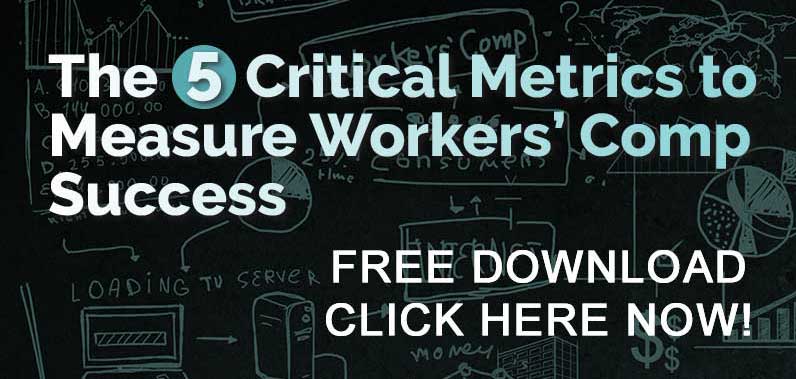Increased wages lead to increased wage loss exposure. It is not rocket science. This is going to create a problem with the insurance industry. Carriers already are riding on tight loss ratios as it is, and if states continue to address minimum wage levels and increase them to attract workers back to the workplace, it is going to create a number of issues.
People Adjust Lifestyle to Live Off Unemployment
But we have to face reality here. Current minimum wage levels are impossible standards to live on, especially for families with young children. The current low levels are what fuel the unemployment rate to begin with. If you make minimum wage, say $9/hr, and you work 40 hours that means you will gross somewhere around $360/week. After tax, you might be lucky to take home $280. Have you tried to live on $280/week with a family? It is nearly impossible. But, if you are currently taking home $240 to sit on your butt and collect your unemployment or work comp check, it is a no-brainer. Not to say that all minimum wage people are home collecting unemployment while watching bad daytime TV, but I think it’s easier to live on $240/week when you don’t have to commute, don’t have to pay for child care, and don’t have to pay for much of anything else.
Click Link to Access Free PDF Download
People are adjusting their lifestyle to live off of their unemployment checks for as long as they can get the benefit, and when the rug is finally pulled out from under them they search for any type of employment possible. Most minimum wage jobs are heavy duty, and require a lot of back breaking work. This is not good for claims people if the worker if out of shape from sitting around the last handful of months, even years.
These minimum wage jobs saw a lot of work comp activity over the years, especially as the economy worsened. Since it would be harder to attain work, injured workers may try to milk as much as they can out of a claim just because it is easier to live off of 80% of your gross wages on comp than it is to work full time and incur 100% of your costs. If you are ‘off on comp’, now you can be at home with your kid and you are not filling up your gas tank every week to make a 30-minute commute to work. Not to mention if you are ‘off on comp’ there is little chance you would be terminated from your job, since then the Carrier would have to pay you comp until you were released from medical restriction.
Using classic economic thought, the idea of promoting a higher wage should increase the amount of people that will look for work since now you are providing the incentive to return to the workplace. When a $9/hr job turns into a $12/hr job, unemployed workers now are ready to strap their boots on and get back to work. This is great, but what pitfalls are being overlooked from a work comp standpoint?
Out of Shape Workers At High Risk For Injury
One issue is out of shape workers coming back to the workplace. If you have been taking it easy for 6 months, it is probably not great that you are thrust back into full speed heavy duty repetitive work. This leads to almost immediate injury, which can be complicated if this is a new employer for the worker. Afraid to rock the boat on their new hire probationary period, injured workers seldom voice any injury until it is way too late, and a major injury occurs. This is extremely costly to the employer, since a routine 2-3 week back strain has now morphed into a potential back surgery.
Economic cutbacks also lead to a lot of layoffs. This is always a slippery slope because workers want to retaliate against their employer, usually by filing comp claims in an effort to secure some money in comp wage loss while they look for new employment. This spikes claim counts for the employer, making them less attractive to the underwriters at their carrier or any carrier looking to write new business.
There is also a productivity learning curve with a group of new hires at this example employer. It takes time and resources to train new talent, and if you spend 2 months training a worker only to have them leave, the employer is back at square one with a job that needs to be filled by an able-bodied worker.
FREE DOWNLOAD: “5 Critical Metrics To Measure Workers’ Comp Success”
Layoffs & Litigation
Going back to layoffs and litigation, if word spreads around that one worker netted a fat settlement on an injury claim, it won’t take long for other workers to potentially jump on the bandwagon. This is scary for everyone involved, and the only outcome is going to be increased claim costs, increased legal expense, and increased headaches for those involved in the defense of these types of claims.
Increased wage costs for employers also mean that cutbacks can come from other benefits, mainly health insurance coverage. It has long been documented that employers with an affordable health insurance plan have workers that are in better health because they make the effort to go to their primary docs for physicals and for other small injuries that have the potential to be aggravated in the workplace. When you start to cut corners in health insurance coverage, you are going to pay for it on the back end with increased work comp claims. Workers see work comp as essentially free medical coverage with the bonus of wage loss pay while out of work.
As with any change, it is going to take some time to find out what a good hourly rate is for what any employer deems their “entry-level” employment job positions. Offer too low of a wage and you may have a hard time trying to keep workers around as they see the work efforts not worth the pay. Offer a good wage, and you may entice workers to come back to the employment arena after spending the summer fishing and hanging out with their kids. State enforced minimum wage levels may help in some areas, and hurt in some areas, but I think everyone can agree that something needs to be done to get workers back to work.
Employers Need to Do Homework Prior to Hiring
Employers need to do their homework on their new recruits, including drug testing, pre-employment physicals, and routine background checks in order to hedge their risk as much as possible. You never know when your next new hire may turn into your biggest work comp expense of all time.
Author Michael B. Stack, CPA, Principal, Amaxx Risk Solutions, Inc. is an expert in employer communication systems and part of the Amaxx team helping companies reduce their workers compensation costs by 20% to 50%. He is a writer, speaker, and website publisher. www.reduceyourworkerscomp.com. Contact: mstack@reduceyourworkerscomp.com.
©2013 Amaxx Risk Solutions, Inc. All rights reserved under International Copyright Law.
FREE DOWNLOAD: “5 Critical Metrics To Measure Workers’ Comp Success”















